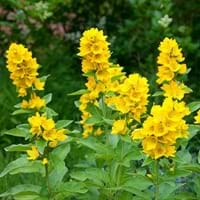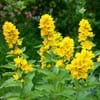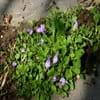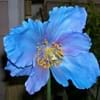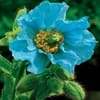Life Span
Perennial
Perennial
Origin
Eastern Europe, Turkey
Southern Asia
Types
creeping Jenny, L. ephemerum
Not Available
Habitat
damp broad-leaved forests, damp meadows, ditches, roadside embankments, shores, stream banks
Mountains
USDA Hardiness Zone
4-8
Not Available
Sunset Zone
1a, 1b, 2a, 2b, 3a, 3b, 4, 5, 6, 7, 8, 9, 14, 15, 16, 17, 18, 19, 20, 21, 22, 23, 24
A1, A2, A3, 1b, 2a, 2b, 3a, 3b, 4, 5, 6, 17
Habit
Upright/Erect
Upright/Erect
Flower Color
Yellow
Blue, Rose
Flower Color Modifier
Bicolor
Bicolor
Fruit Color
Not Available
Green, Tan
Leaf Color in Spring
Green, Dark Green
Green, Blue Green
Leaf Color in Summer
Green, Dark Green
Green, Blue Green
Leaf Color in Fall
Green, Dark Green
Green, Blue Green
Leaf Color in Winter
Light Green
Light Green
Leaf Shape
Long Linear
Oval with toothed margin
Plant Season
Summer
Summer
Sunlight
Full Sun, Partial Sun, Partial shade
Partial Sun, Partial shade
Type of Soil
Clay, Loam
Loam
The pH of Soil
Acidic, Neutral, Alkaline
Acidic, Neutral
Soil Drainage
Well drained
Well drained
Bloom Time
Late Spring, Early Summer
Early Summer
Tolerances
Drought
Cold climate
Where to Plant?
Container, Ground, Pot
Ground
How to Plant?
Divison, Seedlings
Divison, From bulbs, From Rhizomes, Seedlings
Plant Maintenance
Medium
Not Available
Watering Requirements
Keep the ground moist but not water-logged, Requires consistently moist soil
Do not let dry out between waterings, Requires consistently moist soil
In Summer
Lots of watering
Lots of watering
In Spring
Moderate
Moderate
In Winter
Average Water
Average Water
Soil pH
Acidic, Neutral, Alkaline
Acidic, Neutral
Soil Type
Clay, Loam
Loam
Soil Drainage Capacity
Well drained
Well drained
Sun Exposure
Full Sun, Partial Sun, Partial shade
Partial Sun, Partial shade
Pruning
Remove damaged leaves, Remove dead branches
In late autumn, Remove damaged leaves, Remove dead branches, Remove dead leaves
Fertilizers
All-Purpose Liquid Fertilizer, organic fertlizers, slow-release fertilizers
Balanced liquid fertilizer monthly
Pests and Diseases
Slugs, Snails
Downy mildew, Slugs, Snails
Plant Tolerance
Drought
Cold climate
Flower Petal Number
Single
Single
Foliage Texture
Coarse
Not Available
Foliage Sheen
Matte
Not Available
Attracts
Birds, Butterflies, Hummingbirds
Bees, Birds, Butterflies
Allergy
Skin irritation
Not Available
Aesthetic Uses
Showy Purposes
Beautification, Bouquets, Cottage Garden, Showy Purposes
Beauty Benefits
Not Available
Not Available
Edible Uses
Yes
Not Available
Environmental Uses
Not Available
Not Available
Medicinal Uses
Astringent, Diarrhea, Dysentry, Gastrointestinal disorders
Analgesic, Mild sedative
Part of Plant Used
Whole plant
Flowers
Other Uses
Used for its medicinal properties
Employed in herbal medicine
Used As Indoor Plant
No
No
Used As Outdoor Plant
Yes
Yes
Garden Design
Groundcover, Mixed Border, Wildflower
Feature Plant, Mixed Border
Botanical Name
LYSIMACHIA punctata
MECONOPSIS betonicifolia
Common Name
Yellow Loosestrife, garden loosetrife, garden yellow loosetrife
Himalayan Blue Poppy
In Hindi
Yellow Loosestrife
हिमालय ब्लू पोस्ता
In German
Gilbweiderich
Himalaya Blue Poppy
In French
salicaire Jaune
Himalaya pavot bleu
In Spanish
Lisimaquia amarilla
Amapola azul del Himalaya
In Greek
κίτρινο loosestrife
Himalayan μπλε παπαρούνας
In Portuguese
Loosestrife amarelo
Himalayan Blue Poppy
In Polish
żółty toje
Himalayan niebieski mak
In Latin
Yellow Loosestrife
Blue Himalayan Poppy
Phylum
Anthophyta
Magnoliophyta
Class
Equisetopsida
Magnoliopsida
Order
Primulales
Ranunculales
Family
Primulaceae
Papaveraceae
Genus
Lysimachia
Meconopsis
Clade
Angiosperms, Asterids, Eudicots
Angiosperms, Eudicots
Tribe
Not Available
Not Available
Subfamily
Not Available
Not Available
Number of Species
Not Available
Season and Care of Yellow Loosestrife and Himalayan Blue Poppy
Season and care of Yellow Loosestrife and Himalayan Blue Poppy is important to know. While considering everything about Yellow Loosestrife and Himalayan Blue Poppy Care, growing season is an essential factor. Yellow Loosestrife season is Summer and Himalayan Blue Poppy season is Summer. The type of soil for Yellow Loosestrife is Clay, Loam and for Himalayan Blue Poppy is Loam while the PH of soil for Yellow Loosestrife is Acidic, Neutral, Alkaline and for Himalayan Blue Poppy is Acidic, Neutral.
Yellow Loosestrife and Himalayan Blue Poppy Physical Information
Yellow Loosestrife and Himalayan Blue Poppy physical information is very important for comparison. Yellow Loosestrife height is 60.00 cm and width 120.00 cm whereas Himalayan Blue Poppy height is 90.00 cm and width 45.70 cm. The color specification of Yellow Loosestrife and Himalayan Blue Poppy are as follows:
Yellow Loosestrife flower color: Yellow
Yellow Loosestrife leaf color: Green and Dark Green
Himalayan Blue Poppy flower color: Blue and Rose
- Himalayan Blue Poppy leaf color: Green and Blue Green
Care of Yellow Loosestrife and Himalayan Blue Poppy
Care of Yellow Loosestrife and Himalayan Blue Poppy include pruning, fertilizers, watering etc. Yellow Loosestrife pruning is done Remove damaged leaves and Remove dead branches and Himalayan Blue Poppy pruning is done In late autumn, Remove damaged leaves, Remove dead branches and Remove dead leaves. In summer Yellow Loosestrife needs Lots of watering and in winter, it needs Average Water. Whereas, in summer Himalayan Blue Poppy needs Lots of watering and in winter, it needs Average Water.
